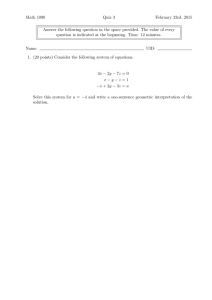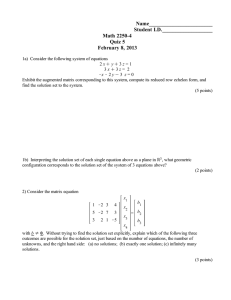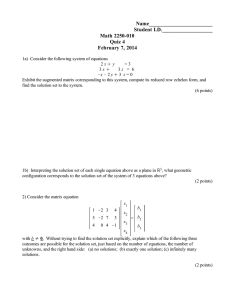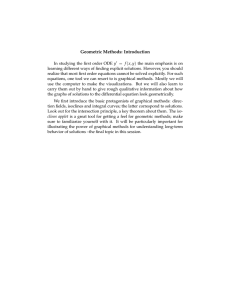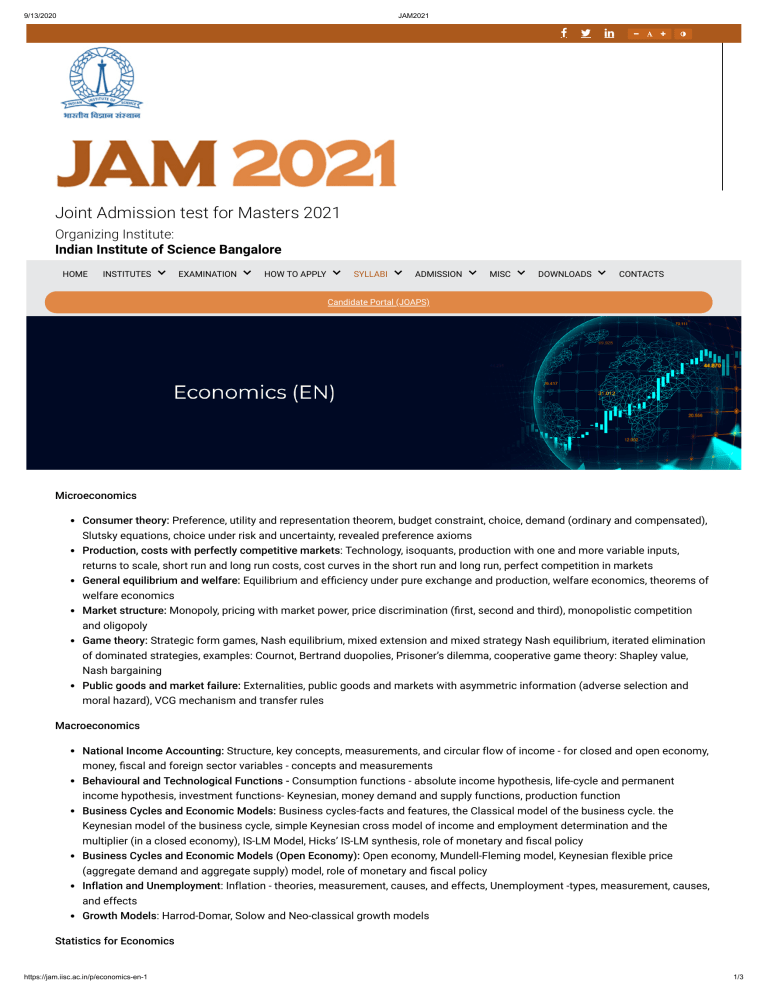
9/13/2020 JAM2021 Joint Admission test for Masters 2021 Organizing Institute: Indian Institute of Science Bangalore HOME INSTITUTES EXAMINATION HOW TO APPLY SYLLABI ADMISSION MISC DOWNLOADS CONTACTS Candidate Portal (JOAPS) Microeconomics Consumer theory: Preference, utility and representation theorem, budget constraint, choice, demand (ordinary and compensated), Slutsky equations, choice under risk and uncertainty, revealed preference axioms Production, costs with perfectly competitive markets: Technology, isoquants, production with one and more variable inputs, returns to scale, short run and long run costs, cost curves in the short run and long run, perfect competition in markets General equilibrium and welfare: Equilibrium and efficiency under pure exchange and production, welfare economics, theorems of welfare economics Market structure: Monopoly, pricing with market power, price discrimination (first, second and third), monopolistic competition and oligopoly Game theory: Strategic form games, Nash equilibrium, mixed extension and mixed strategy Nash equilibrium, iterated elimination of dominated strategies, examples: Cournot, Bertrand duopolies, Prisoner’s dilemma, cooperative game theory: Shapley value, Nash bargaining Public goods and market failure: Externalities, public goods and markets with asymmetric information (adverse selection and moral hazard), VCG mechanism and transfer rules Macroeconomics National Income Accounting: Structure, key concepts, measurements, and circular flow of income - for closed and open economy, money, fiscal and foreign sector variables - concepts and measurements Behavioural and Technological Functions - Consumption functions - absolute income hypothesis, life-cycle and permanent income hypothesis, investment functions- Keynesian, money demand and supply functions, production function Business Cycles and Economic Models: Business cycles-facts and features, the Classical model of the business cycle. the Keynesian model of the business cycle, simple Keynesian cross model of income and employment determination and the multiplier (in a closed economy), IS-LM Model, Hicks’ IS-LM synthesis, role of monetary and fiscal policy Business Cycles and Economic Models (Open Economy): Open economy, Mundell-Fleming model, Keynesian flexible price (aggregate demand and aggregate supply) model, role of monetary and fiscal policy Inflation and Unemployment: Inflation - theories, measurement, causes, and effects, Unemployment -types, measurement, causes, and effects Growth Models: Harrod-Domar, Solow and Neo-classical growth models Statistics for Economics https://jam.iisc.ac.in/p/economics-en-1 1/3 9/13/2020 JAM2021 Probability theory, Sample spaces and events, Axioms of probability and their properties, conditional probability and Bayes’ rule, independent events Random variables and probability distributions, probability distributions, expected values and functions of random variables, properties of commonly used discrete and continuous distributions Random sampling, Density and distribution functions for jointly distributed random variables, computing expected values of jointly distributed random variables, covariance and correlation coefficients Point and interval estimation, estimation of population parameters using methods of moments and maximum likelihood procedures, properties of estimators, confidence intervals Hypothesis testing, distributions of test statistics, testing hypotheses related to population parameters, Type I and Type II errors, the power of a test, tests for comparing parameters from two samples Indian Economy Indian economy before 1950: Transfer of tribute, deindustrialization of India Planning and Indian development: Planning models, relation between agricultural and industrial growth, challenges faced by Indian planning Indian economy after 1991: Balance of payments crisis in 1991, major aspects of economic reforms in India after 1991, reforms in trade and foreign investment Banking, finance and macroeconomic policies: aspects of banking in India, CRR and SLR, financial sector reforms in India, fiscal deficit, savings and investment rates in India Inequalities in social development: India’s achievements in health, education and other social sectors, disparities between Indian States in human development Poverty: Methodology of poverty estimation, Issues in poverty estimation in India India’s labour market: unemployment, labour force participation rates Mathematics for Economics Preliminaries and Functions of one real variable: a. Set theory and number theory, Graphs, elementary types of functions: quadratic, polynomial, power, exponential, logarithmic, sequences and series: convergence, algebraic properties and applications, b. Continuous functions: characterisations, properties with respect to various operations and applications, c. Differentiable functions: characterisations, properties with respect to various operations and applications, d. Second and higher order derivatives: properties and applications Single-variable optimization: Geometric properties of functions: convex functions, their characterisations and applications, local and global optima: geometric and calculus-based characterisations, and applications. Linear algebra: Vector spaces - algebraic and geometric properties, scalar products, norms, orthogonality, linear transformations: properties, matrix representations and elementary operations, systems of linear equations: properties of their solution sets, determinants: characterisation, properties and applications Functions of several real variables: Geometric representations - graphs and level curves, differentiable functions: characterisations, properties with respect to various operations and applications, second order derivatives: properties and applications, the implicit function theorem, and application to comparative statics problems, homogeneous and homothetic functions: characterisations and applications Multivariate optimization: Convex sets, geometric properties of functions: convex functions, their characterisations, properties and applications, further geometric properties of functions: quasi-convex functions, their characterisations, properties and applications, unconstrained optimisation: geometric characterisations, characterisations using calculus and applications, constrained optimisation with equality constraints: geometric characterisations, Lagrange characterisation using calculus and applications, properties of value function: envelope theorem and applications Linear programming: Graphical solution, matrix formulation, duality, economic interpretation Integration, differential equations, and difference equations:- Definite integrals, indefinite integrals and economic applications, first order difference equations, equilibrium and its stability, first order differential equations, phase diagrams and stability Contact Us Phone No.: 080-2293 2392 E-mail: jam@iisc.ac.in Organizing Chair JAM 2021 GATE-JAM Office Indian Institute of Science, Bangalore Bengaluru - 560012, Karnataka, India https://jam.iisc.ac.in/p/economics-en-1 2/3 9/13/2020 JAM2021 © JAM 2021, IISc Bangalore Help Desk Phone No.: 080 2293 3711/3713 Monday to Friday 10.00 am to 12.00 noon, 2.00 pm to 5.00 pm (Government working days only) VISITORS: 3 1 4 6 8 7 Admitting Institutes Result Sharing Institutes Legal Disclaimer Privacy Policy Disclaimer The health and safety of our examination participants is of utmost priority. Due to the current pandemic situation, all dates mentioned in this poster may be subject to changes. At this point of time, we intend to move forward with the JAM-2021. In rare cases, it may be necessary to cancel or postpone the examination because of situations beyond our control. All updates will be notified on JAM 2021 website http://jam.iisc.ac.in https://jam.iisc.ac.in/p/economics-en-1 3/3


